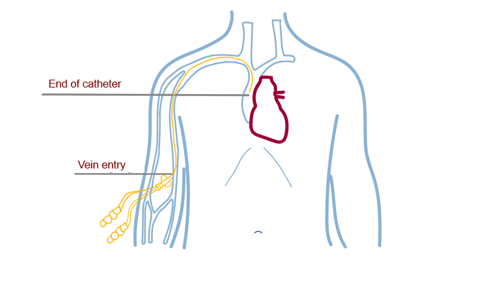PICC line placement
What is a PICC line?
A PICC line (peripherally inserted central catheter) is a central catheter inserted into a vein in the arm. A PICC line allows for long-term and/or prolonged access to the veins for people who need IV medication often or for longer periods of time. Without a PICC line, you would need multiple IVs which could harden the veins, making them harder to puncture.

Illustration PICC line
 nl
nl
 Nederlands
Nederlands